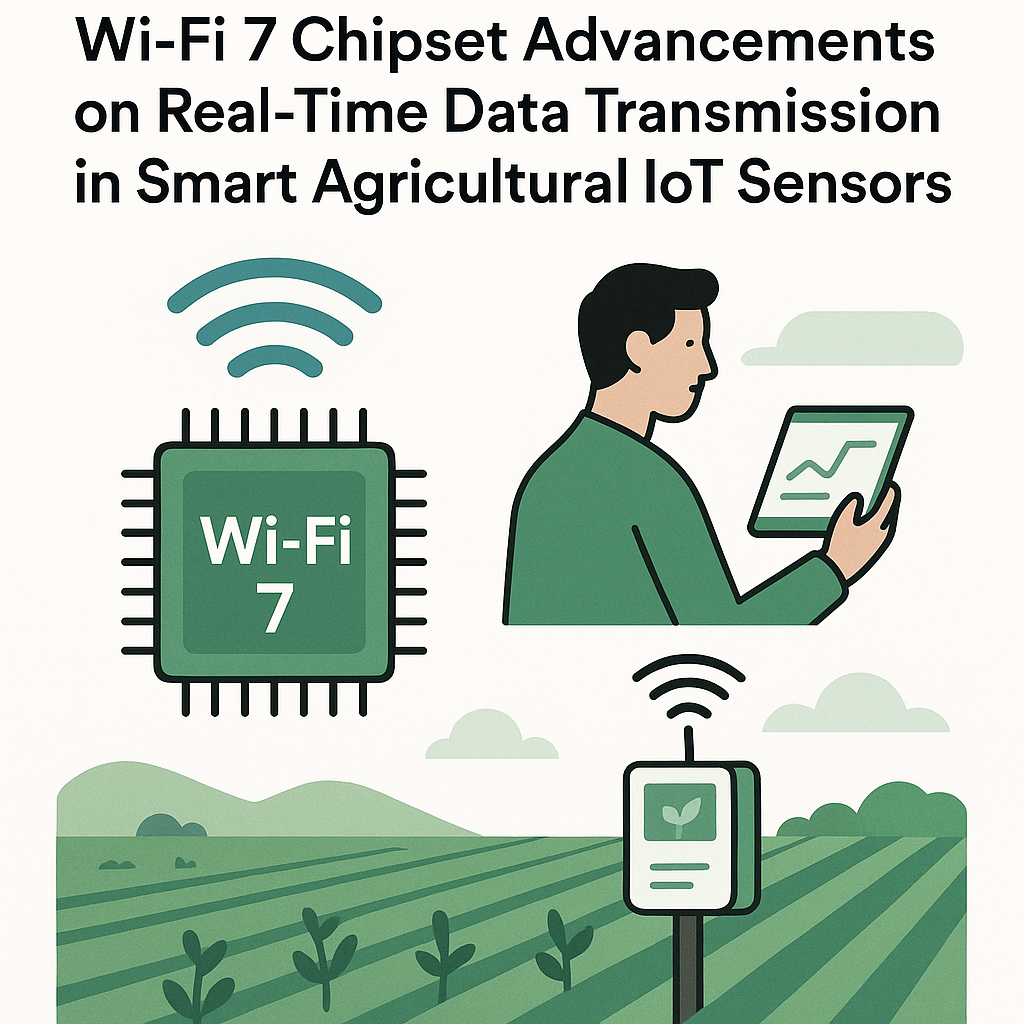Introduction
As agriculture increasingly adopts technology to enhance productivity and sustainability, the role of advanced connectivity solutions becomes paramount. Wi-Fi 7, the latest generation of wireless technology, promises significant improvements in data transmission capabilities. This blog explores how advancements in Wi-Fi 7 chipsets are transforming real-time data transmission in smart agricultural IoT sensors, enhancing efficiency and decision-making in farming practices.
Understanding Wi-Fi 7 Technology
Wi-Fi 7, also known as 802.11be, is the upcoming standard designed to offer substantial improvements over its predecessor, Wi-Fi 6. Key features of Wi-Fi 7 include:
- Higher Data Rates: Supports multi-gigabit speeds, potentially up to 46 Gbps.
- Improved Latency: Reduces delays in data transmission, crucial for real-time applications.
- Multi-Link Operation (MLO): Enables devices to connect on multiple bands simultaneously, improving reliability and performance.
- Enhanced Capacity: Better handling of numerous devices, essential for densely populated IoT environments.
The Importance of Real-Time Data Transmission in Smart Agriculture
Real-time data transmission is vital in smart agriculture for several reasons:
- Immediate Decision-Making: Farmers can make instant decisions based on live data, enhancing responsiveness to changes in environmental conditions.
- Precision Farming: Accurate data allows for more targeted resource application, reducing waste and increasing yield.
- Remote Monitoring: Farmers can monitor crops and livestock from anywhere, improving management efficiency.
Impact of Wi-Fi 7 on IoT Sensors in Agriculture
The integration of Wi-Fi 7 chipsets into agricultural IoT sensors can significantly enhance their functionality and effectiveness. Here’s how:
1. Enhanced Speed and Efficiency
With Wi-Fi 7, IoT sensors can transmit data at unprecedented speeds. This improvement enables:
- Faster updates on soil moisture levels, temperature, and crop health, leading to timely interventions.
- Efficient data collection from multiple sensors simultaneously, allowing for comprehensive analysis.
2. Improved Reliability
Wi-Fi 7’s MLO feature allows devices to maintain connections across multiple frequency bands. This ensures:
- Stable connections even in areas with high interference, such as farms with numerous devices.
- Reduced downtime in data transmission, ensuring that critical data is consistently available.
3. Scalability and Future-Proofing
The enhanced capacity of Wi-Fi 7 supports the growing number of IoT devices in agriculture. This scalability is crucial as:
- Farmers adopt more sensors and devices, from drones to automated irrigation systems.
- Future advancements in technology demand a robust network capable of handling increased data loads.
4. Better Energy Management
Wi-Fi 7 is designed to be more energy-efficient, which is critical for battery-operated IoT sensors. Benefits include:
- Longer battery life for sensors, reducing the need for frequent maintenance and replacements.
- Lower energy consumption overall, contributing to more sustainable farming practices.
Challenges and Considerations
Despite the numerous advantages, the adoption of Wi-Fi 7 in agricultural IoT sensors also presents challenges:
- Cost of Implementation: Upgrading to new technology may require significant investment.
- Infrastructure Requirements: Farms may need to upgrade existing network infrastructures to support Wi-Fi 7.
- Training and Adaptation: Farmers and workers may require training to effectively use new technologies.
Conclusion
The advancements in Wi-Fi 7 chipsets have the potential to revolutionize real-time data transmission in smart agricultural IoT sensors. By providing faster speeds, improved reliability, and enhanced scalability, Wi-Fi 7 can help farmers make better-informed decisions, optimize resource use, and ultimately boost productivity. While challenges remain, the benefits of adopting this technology in agriculture far outweigh the hurdles, paving the way for a more efficient and sustainable future in farming.



